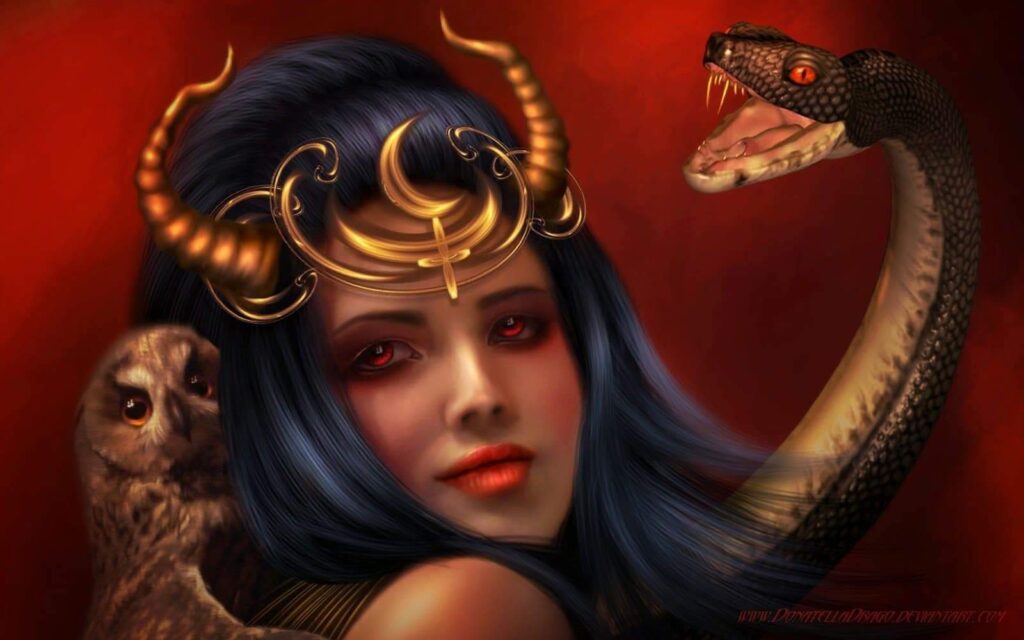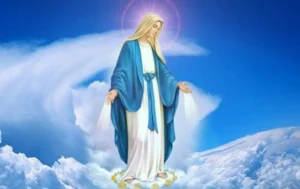Lilith, a compelling and enigmatic figure, has long inhabited the murky boundaries between mythology, folklore, and religious tradition. Emerging initially from Jewish textual sources outside the canonical Bible, she has since permeated broader cultural consciousness, leaving a distinctive mark on literature, art and popular culture. The narrative of Lilith is a saga of rebellion and autonomy, of gender dynamics and power struggles, and of the consequences of challenging societal norms.
Who is Lilith in the Bible?
Lilith is a figure who originates from Jewish folklore, mentioned in some texts associated with the Bible, though her appearance in the canonical Bible itself is a matter of interpretation and debate. The primary source of the Lilith legend in Jewish tradition comes from the Alphabet of Ben Sira, a collection of Jewish tales from the medieval period, not from the Bible itself.
The term “Lilith” first appears in the Bible in Isaiah 34:14, in a list of creatures that will inhabit the devastated land after God’s judgement. The King James Version of the Bible translates this term as “screech owl,” while other translations use “night creature,” “night monster,” “night hag,” or “night specter.” Only a minority of interpretations suggest this may refer to Lilith as a personified entity.
Lilith is more elaborately discussed in Jewish mysticism and folklore, primarily in the aforementioned Alphabet of Ben Sira, dating back to between the 8th and 11th centuries CE. Here, she is portrayed as the first wife of Adam, created at the same time and from the same earth as Adam. This contrasts with the biblical Eve, who was created from one of Adam’s ribs. According to this narrative, Lilith left Adam after a conflict over equality in their relationship and subsequently became a figure associated with the night, known for her demonic and harmful qualities. She was often portrayed as a threat to newborn babies and their mothers.
In the Kabbalah, Lilith is considered a demon, representing the sexual and spiritual challenges that individuals must overcome. She is often depicted in these writings as a seductive figure who tempts men and threatens women and children.
In contemporary interpretations, some feminist scholars and religious practitioners have reinterpreted Lilith’s character. In these readings, she symbolizes a woman’s struggle for equality and autonomy, and her refusal to submit to Adam is seen as an act of feminist rebellion.
Characteristics associated with Lilith
Lilith carries a complex set of characteristics and attributes that have evolved and expanded over time.
Equality and Autonomy: In the Alphabet of Ben Sira, Lilith is depicted as the first woman, created from the same earth as Adam. This positions her as Adam’s equal, a point that she insists upon in their relationship. Her demand for equal status and her subsequent decision to leave the Garden of Eden when this is denied reflects her autonomy and her insistence on equality.
Rebellion: Lilith’s refusal to submit to Adam and her decision to leave the Garden of Eden are acts of rebellion. Lilith rejects the subservient role assigned to her, demonstrating defiance against the established order.
Demonic Association: Following her departure from Eden, Lilith is transformed into a demonic figure in Jewish tradition. She is often associated with the night and considered a threat to newborn infants and their mothers. She is depicted as a harbinger of death and disease, making her a symbol of fear and danger.
Temptation and Seduction: In later Kabbalistic literature, Lilith is portrayed as a temptress, often seducing men in their dreams. She represents sexual desire that can lead to spiritual and moral downfall.
Spiritual Adversity: Along with Samael, the angel of death, Lilith embodies the darker aspects of the spiritual realm in Kabbalistic tradition. She presents spiritual challenges that individuals must overcome in their pursuit of moral rectitude.
Resistance and Empowerment: In contemporary feminist interpretations, Lilith’s defiance against patriarchal structures and her insistence on autonomy and equality have been seen as symbols of female empowerment. She represents resistance against gender oppression and a demand for respect and recognition.
Otherworldliness: Lilith is often depicted with wings and talons, emphasizing her otherworldly, supernatural nature. She is a figure of the liminal space between human and divine, known and unknown, order and chaos.
The story of Lilith
While Lilith’s explicit presence in biblical canon is minimal and her identification in the Bible is controversial, her story is extensively detailed in later Jewish texts and folklore, creating a rich, albeit non-canonical, narrative that interweaves with biblical mythology.
As delineated primarily in the Alphabet of Ben Sira, a medieval collection of Jewish tales, Lilith is portrayed as the first woman, created at the same time and from the same earth as Adam, before Eve was created. This narrative forms an alternative to the more familiar Genesis story, where Eve, made from one of Adam’s ribs, is recognized as the first woman.
In the story presented in the Alphabet of Ben Sira, Lilith and Adam initially lived together in the Garden of Eden. However, tension arose over their roles within the relationship. Lilith insisted that she was Adam’s equal, having been created in the same manner, and thus refused to be subservient to him. When Adam refused to acknowledge her equality, Lilith pronounced the ineffable name of God and fled from the Garden of Eden.
God sent three angels—Senoy, Sansenoy, and Semangelof—to retrieve Lilith, offering her a chance to return. However, she refused the angels’ proposition. As a consequence of her defiance, she was portrayed as a demonic figure in Jewish folklore, associated with the night and known for her harm to newborn babies and their mothers.
In later Kabbalistic texts, Lilith’s characterization deepens further. She is depicted as the embodiment of the ‘first evil,’ born simultaneously with the creation of light and darkness. She is also portrayed as the mate of Samael, the angel of death, and together they are often seen as representing the darker aspects of the spiritual world.
The role of Lilith in contemporary literature and popular culture
The figure of Lilith has found a vibrant life in contemporary literature and popular culture, far beyond her roots in Jewish folklore and non-canonical biblical texts. She often serves as a symbol of female strength, rebellion, and autonomy, making her a particularly potent character in the discourse of gender dynamics and feminist critique. Furthermore, her mysterious and somewhat menacing characteristics lend themselves well to horror and fantasy genres.
In the realm of literature, writers have employed the figure of Lilith in various ways. She is often portrayed as a complex, independent female character, resonating with feminist themes. For instance, in “The Book of Lilith” by Barbara Black Koltuv, Lilith is explored as an archetype of the power of the feminine, while in “Lilith’s Brood” by Octavia Butler, the character Lilith awakens on an alien ship and must navigate a world that challenges and expands traditional gender roles and power dynamics.
In popular culture, particularly in film, television, and graphic novels, Lilith is often invoked in the context of supernatural or horror themes. In the television series “Supernatural,” Lilith is a powerful demon, the first of her kind. In the series “Chilling Adventures of Sabrina,” she is portrayed as a complex character with her own ambitions and struggles, far from a one-dimensional villain. In “True Blood,” Lilith is the primal vampire, the supposed “Mother” of all vampires. In each case, Lilith’s inherent power and sometimes threatening presence are key to her characterization.
Lilith has also found her place in music and art, with many female artists drawing upon her as a symbol of resistance and autonomy. For instance, the Lilith Fair, a concert tour and travelling music festival in North America, focused on female solo artists and female-led bands, explicitly drawing upon Lilith’s reputation as a figure of independent femininity.
Thus, the role of Lilith in contemporary literature and popular culture is diverse and multi-faceted, reflecting her complex symbolic resonance. She is frequently invoked as a symbol of female power and rebellion, challenging traditional gender roles and societal norms. Additionally, her historical association with the night and the demonic has made her a compelling character in horror and supernatural-themed media.









